#bela harlow
Text
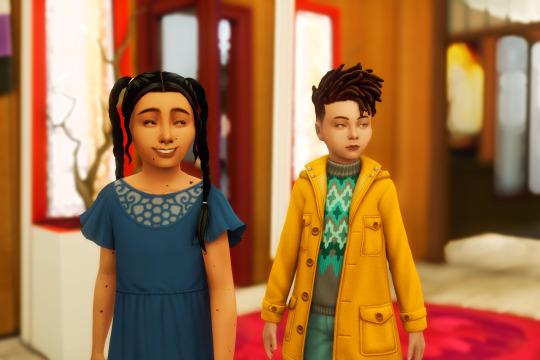
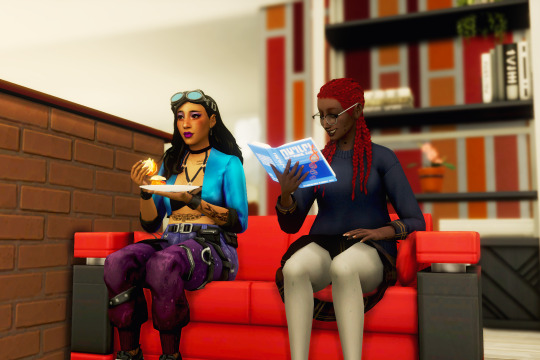

hiiii it's been a while. Bela apparently aged up while i wasn't looking and Ramona is making progress on her aspiration goals. i do not remember how this game works
Complete the Goal-Oriented Aspiration (1/3)
✓ Join an After-School Activity (1/1)
Do Homework 5 Times (1/5)
✓ Earn 500 Simoleons (500/500)
#family jewels legacy challenge#harlow:ruby#hedy bermudez#bela harlow#glitch by simminglytimeladies#ramona harlow
5 notes
·
View notes
Text
I tried writing :D
Tw for an abusive relationship and just general yelling
I wrote this while I was quite angry at someone at school so
it’s about my Ocs Harlow and Bela, and a time where Harlow is done with her bull
(Harlow is he/it/they/she btw, idk if that comes across very well)
Harlow and bela aren’t having a good time
“what? What could you possibly want? I’ve given you everything I have. My time my love my fucking home and you treat me like absolute shit in return.” She took a deep breath afterwards. Harlow stood there in the archway of the kitchen dumbfounded.
He knew his relationship with bela was bad but this was a new low for them. The thing is the stuff bela said wasn’t even true. She has given Harlow hardly anything, least of all love. They didn’t even live together.
Harlow just stood there. Bela was breathing heavily looking directly at Harlow with a stare that could cut trough him.
“Hun I jus-“ Harlow said, putting his hands up trying to comfort Bela. he didn’t get much out before she started to yell, again.
“Don’t you ‘hun’ me, ok! you’ve taken more than you could ever give in a lifetime you selfish piece of S-“ as her words slowed she was cut off by a sound she didn’t expect to hear, ever. It was Harlow, loud.
“IF ANYTHING -YOU- ARE SELFISH! Everything you say is lies, everything you do is fake, you give so little and you take so god damn much. You have taken more than you could ever know from me” he didn’t expect himself, to say this that is, but he felt all of his pent up anger gush out like blood out of a stab wound
“You have taken my life away from me you manipulative shit bag. My friends. The collage that I was supposed to go to but because your sorry little ass would be alone for so long I ‘felt bad’ and ‘sorry for you’ but in reality I knew you couldn’t be trusted alone. Along with that, you’ve taken my joy, everything has to be about you! Everything I ever had an interest in you took it away from me any and everything we do has to be about you, the picnics, the movies , that I always pay for, the we decorate for my favorite holiday! One, mind you, that you have shown no interest in other than to correct me on how things ‘should be,”he was tired
“What…” bela was on the verge of tears
“You heard me” Harlow said that in a voice so stern even it didn’t expect “I will not repeat myself. I will not for the love of fucking god deal with your shit for a minute longer”
Harlow started for the door, and Bela followed them, still not really able to make a sound but reaching out for them, as if asking them to stay. Making sure to grab their bag from atop of the side table.
“I’ll see you next Wednesday” Harlow said turning just their head back to see Bela’s face, Which was crying. “I need some time to myself.”
Bela’s hand was still outstretched
It walked out the door making sure not to slam it. It stood. It didn’t know what to do with itself, what was it thinking saying that it will see bela again knowing bela she probably wouldn’t even come. The last picnic they had was so Erie. The constant feeling of being watched. It would probably be worse next time that went, even if bela did show up.
Harlow walked to it’s car and got on its driver seat. It put its bag in the passenger seat and sat. Still not knowing what to do. Drive home it guessed. Yeah that sounded like a good idea get home and bed with emotions and what not in the morning.
The drive home took a while. It felt like even longer. Harlow tried to listen to the radio but every song was about love, even ones that weren’t. None of them were the things it liked. It released everything, Everything that it liked was because of bela. It had no idea what it liked.
Once home it made sure everything was locked. The widows, the doors, the thing that lead to the basement from the backyard. Then it just sat on its bedroom floor, in a ball, trying not to think. It changed its clothes so something for suitable for sleep and plopped onto its bed. It tried to sleep but that didn’t go well. So there it sat stairing at its bedroom ceiling trying not to think. Eventually it’s eyes closed.
(out of story, this is some time in the future where Harlow is in a much better situation and has a actually good girlfriend)
Hey Harlow?” A familiar voice called out “Harlow!” The voice sounded less cloudy, more, close.
Hey!” Harlow felt something on their shoulder. They looked down, a hand. They looked back up. It was Eve
“So what do you think?!” Eve was in a black tank top with a purple jacket on top, black leggings and a plad black and orange skirt. She had striped bunched up socks and what looked to be really heavy boots on
“ I thought since you don’t really like to change up your outfit too often, and Halloween is coming up, I would match you!” Harlow looked at Eve blankly
“ do you not like it? I can change if you’d li-“
“No, no no this is fine. You look Wonderful!”
Harlow let out a bit of a laugh.
“ you sure caus-“
Harlow got up to hug her. Eve was sort of confused but embraced the hug anyways
“ I’m sure” Harlow knew if she was able to cry, she would be now “ don’t change yourself for me”
“Hunny I ment the outfit”
“ I know, but still “
Asa walked in “Eve, I think Harlow is like . Oh- i see. Ok well you two are being all lovey dovey and shit and hugging or whatever me and sketch are gonna see how long it takes to get ahold of the main crystal without X so if you want to come join us, we could always use some help, especially with Eliza’s whole ‘goddess of the worlds’ thing”
“ Asa get out of here we’re having a moment! “
“ ok I didn’t know your middle name was party pooper”
“ Asa! Leave” Harlow said In That same stern voice she still didn’t expect from herself
this is my first time really writing something and I’ve never really had a bad relationship with someone (at least not at the scale Harlow was it here) so sorry if the characters seem a bit out of place, acting weird, or just the writing equivalent of stiff. Same goes with grammatical errors and stuff. I’m always open to constructive criticism so if anyone who reads this has any, I would be glad to hear it!
(p.s. Eve and Harlow don’t do anything afterwards, Harlow is a knock off Frankenstein’s monster and even if the did want to, they couldn’t. Eve is also a sex repulsed Ace. They just cuddled in bed for a bit. Later on X went to go check with them and ask where Sketch and Asa were and she got a little upset at the fact that Eve had her shoes on in bed)
originally written 1/3/24 and edited ever since, until now
#X’s ocs#Oc#Oc stories#original character#Harlow#Bela#Eve#Asa#sketch#Julia#i know I tag a lot of stuff with x’s __ but that’s because I was originally just going to have X/Julia as a persona of sorts#But I just ended up being me with the name Liv or Olivia on here lol#Writing#how do I tag this lol#short story#short stories#Aaaaaaa#its late
0 notes
Note
Lizard, cat, mirror
🦎 LIZARD: Who is your most untrustworthy OC? Why?
So it sort of depends how we are ranking trust. Is it someone keeping a very deep secret from other people and going to extreme lengths to ensure nobody finds out? Is it someone manipulative to the people around them, lying or withholding information to suit their advantage? Is it someone who presents as one way to hide their true nature? I don't really have an answer, so here's a list of some OCs whose words you should at least be wary of, I suppose: Vítor Cadogan, Ive, Harlow, Potentate Salvatore, Diane, and Kelly
🐈 CAT: Does the world of your WIP have any superstitions or folklore?
Hmm, not much is coming to mind. Bronze Eden certainly has a lot of 'folklore', but that's inherently tied to their religion, and the lines between fact and myth are extremely blurry in Eden. I suppose a large source of mystery and legend for the people of Bronze Eden is The Wall, a massive, ancient structure outside of Eden and Nod that seems to be keeping something out, but what nobody is quite sure. There's a lot of stories as to why, but despite sending an expedition every few years nothing really comes of it.
🪩 MIRROR: Which OC is most like you?
This one is difficult. I'm going to go with Bela; transsexual neopronoun using communist with slight anger issues.
Random WIP asks!
2 notes
·
View notes
Note
Old Hollywood asks: 1, 2,10, 11, 13,19
1.) favorite movie?
Vertigo (1958) is a perfect film.
2.) favorite actor/actress?
My beloveds (in no particular order): Fredric March, Sylvia Sidney, Richard Widmark, Marie Dressler, Bela Lugosi, Judy Holliday, Sessue Hayakawa, Jean Harlow, Jimmy Stewart, Vincent Price, Barbara Stanwyck
10.) favorite pre-code?
asked and answered. But here, have another:
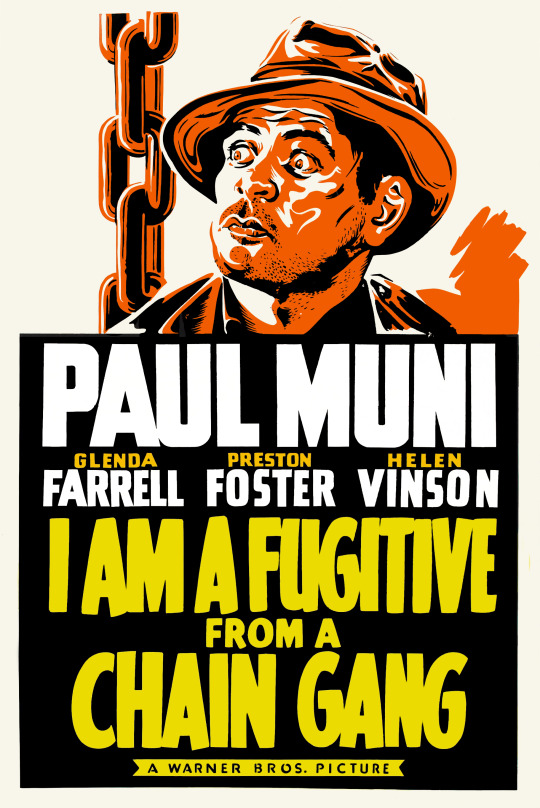
11.) favorite noir?
Genre-defining: Detour (1945)
I recently watched and loved This Gun for Hire (1942)
13.) a movie with great costume design?
asked and answered. But have some more:
Gentlemen Prefer Blondes (1953)
Morocco (1930)
Summertime (1955)
Tales of Hoffmann (1951)
19.) favorite on-screen couple?
THEY:

(william powell and myrna loy)
5 notes
·
View notes
Text
Victoria’s Secret “The tour 2023
El pasado 6 de septiembre de este año se llevó a cabo uno de los eventos más esperados en la industria de la moda; el Victoria’s Secret Fashion Show el cual desde hace aproximadamente 5 años no se presentaba debido a bajas de los ratings que tenía la icónica pasarela y las críticas que obtuvieron por causa de discriminación ya que las modelos que protagonizaban este evento eran considerados el estándar de belleza más alto y no tenían variedad ni diferencias y que no era un ejemplo inclusivo para la sociedad.
Pero esto no excluía el hecho de que era un evento gigante y que iban personas bastante conocidas en el mundo de la moda. Por ejemplo, las pasarelas eran mayormente protagonizadas por modelos como Gigi Hadid, Bela Hadid, Kendal Jenner, Adriana Lima, Candice Swanepoel, Gisele Bündchen y Naomi Campbell. Una de las grandes características por las cuales este evento es tan reconocido es que las modelos llevaban puesto prendas de lencería de la marca y unas alas de ángel y entre más extravagantes los outfits y las alas mejor.
Incluso este evento tenía la participación de grandes cantantes como Taylor Swift, Ariana Grande, Kanye West, Rihanna, The weekend etc.
El formato con el que Victoria secrets regreso la pasarela es con el nombre de ‘the tour 23’ con el propósito de reinventarse y convertirse en una marca inclusiva Este material, que promete ser mucho más inclusivo y diverso, esta disponible exclusivamente en la plataforma de streaming de Amazon Prime a partir del 26 de septiembre de este año.
Unas de las modelos participantes este año son Valentina Sampaio, Adut Akech, Jill Kortleve, Paloma Elsesser, Devyn Garcia, Sora Choi, Taylor Hill, Winnie Harlow, entre otras.
Y en este evento la música en vivo no puede faltar, la artista principal de la pasarela fue Doja Cat.
Ahora bien, Victoria’s Secret cumplió con su objetivo de convertir su marca en un ejemplo de inclusividad para la sociedad, sin embargo, el público no lo recibió de manera esperada. Existen muchas quejas sobre las diferencias tanto en la producción del evento como en la ropa de la marca. Pueden ser debido a muchos factores, y no tiene nada que ver con las modelos que participaron en el desfile sino que perdió la esencia de lo que era años atras. Es lo que la mayoría del público ha comentado y se ha expresado sobre la situación.
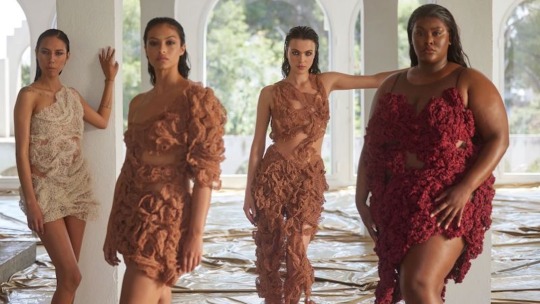

0 notes
Note
What's your favorite model?
małgosia bela, anja rubik (met her and she is such a sweetheart), lara stone, natasha poly, jessica stam, shalom harlow!!!, guinevere van seenus, amber valletta. real queens only
0 notes
Photo
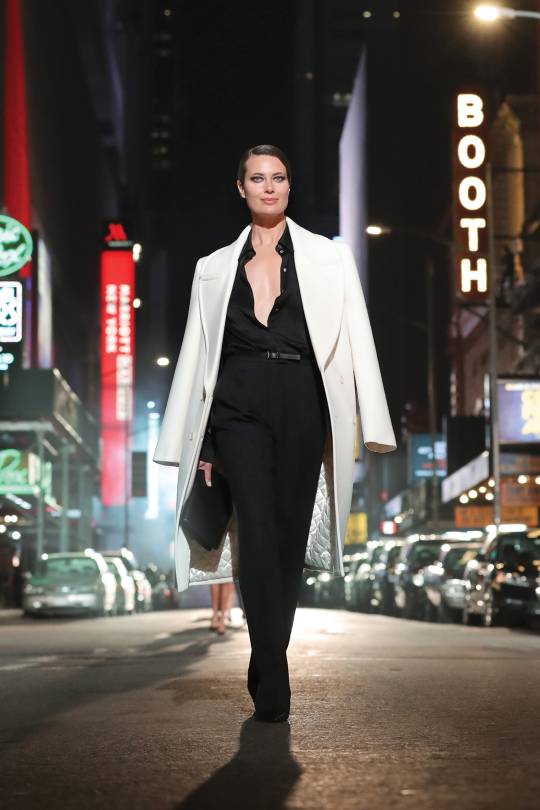
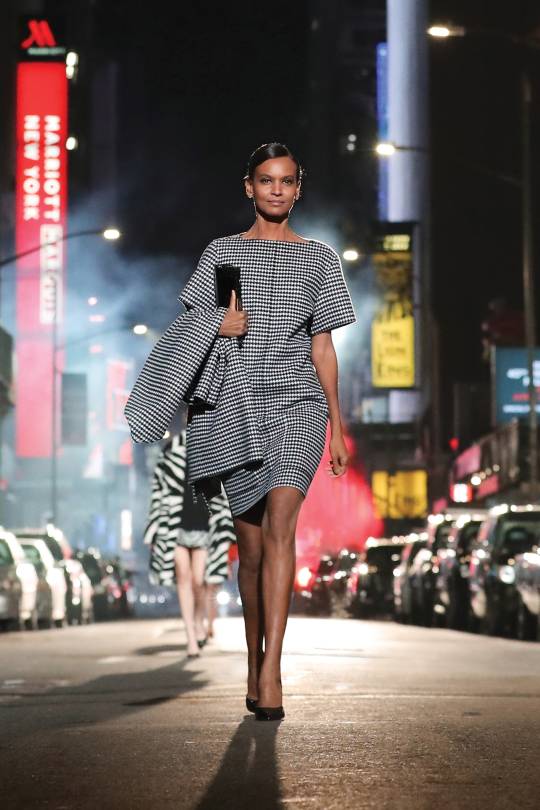
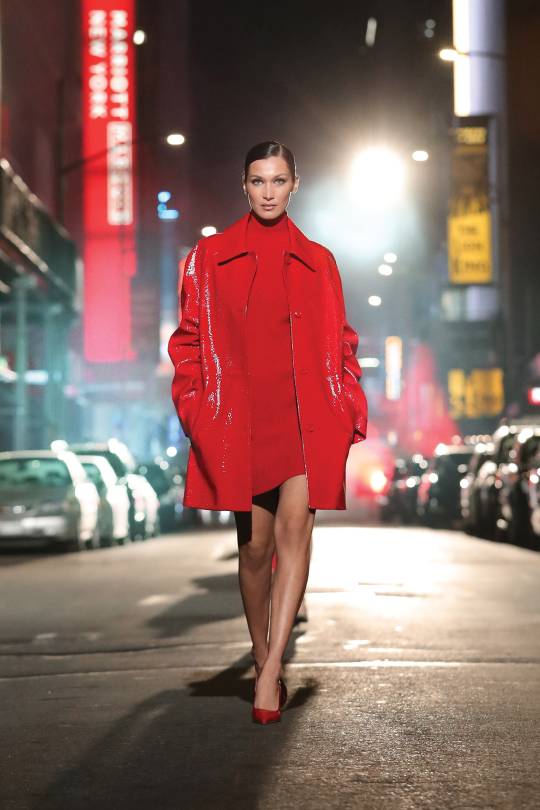
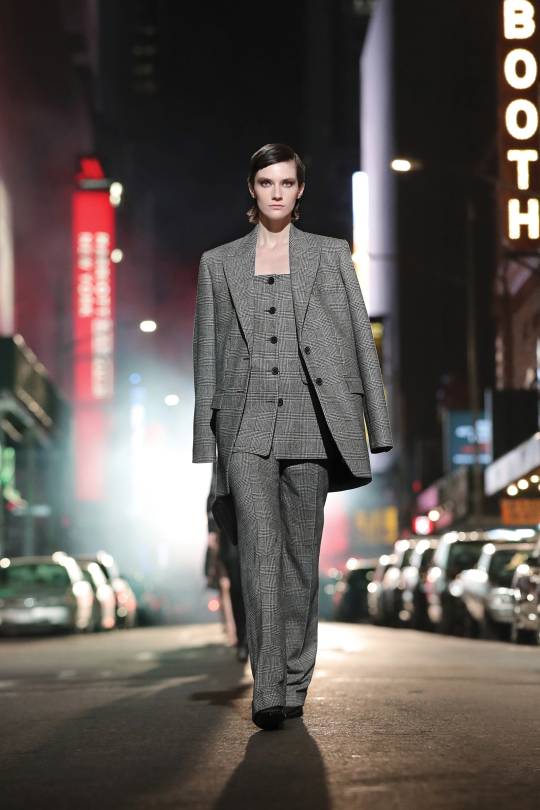
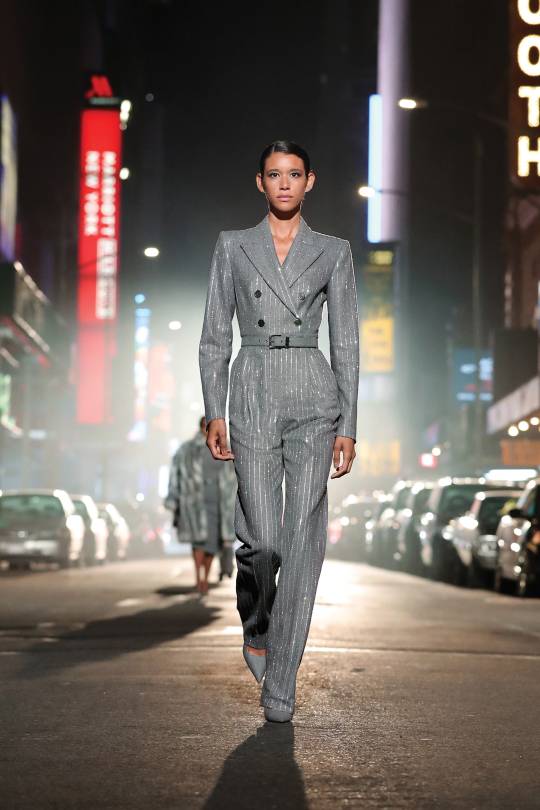
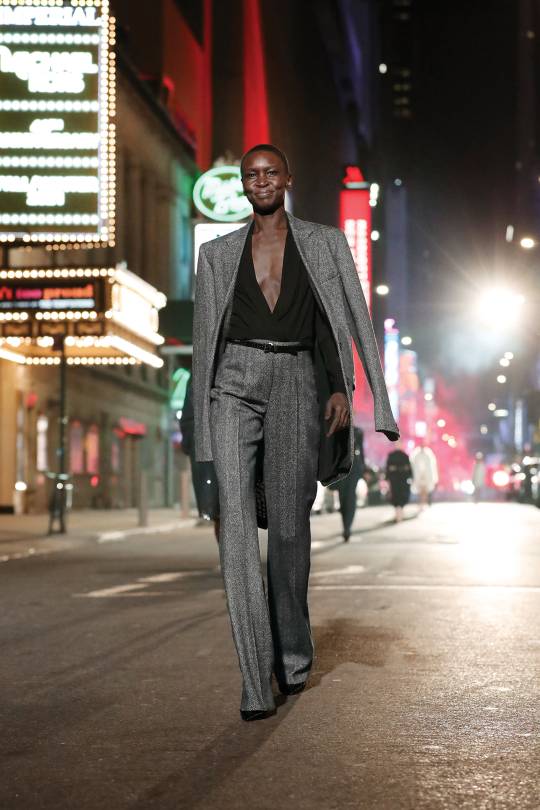


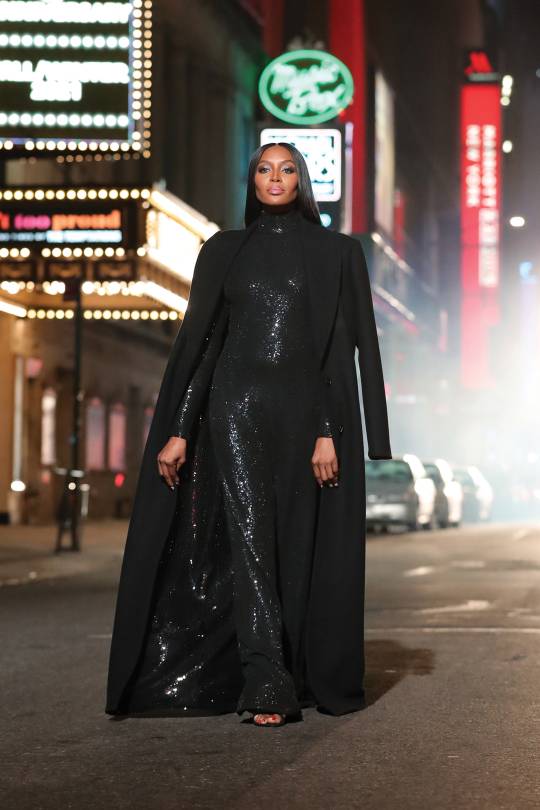
Michael Kors Collection - Fall 2021
New York
Michael Kors’s 40th
#Shalom Harlow#Liya Kebede#Bela Hadid#Dilone#Julia Nobis#Michael Kors#MK#Naomi Campbell#New York#Supermodels#70s#Opulence
48 notes
·
View notes
Text
Yohji Yamamoto Spring 1999 Ready-to-Wear


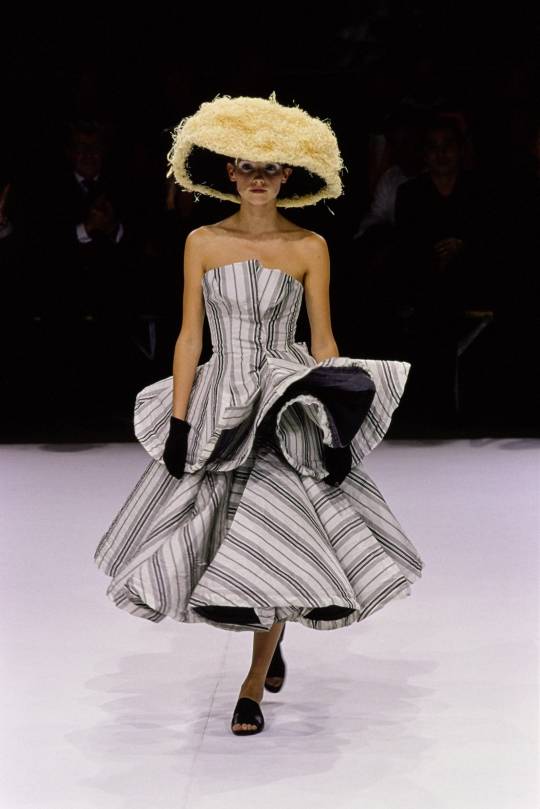
(Model: Alexandra Egorova)
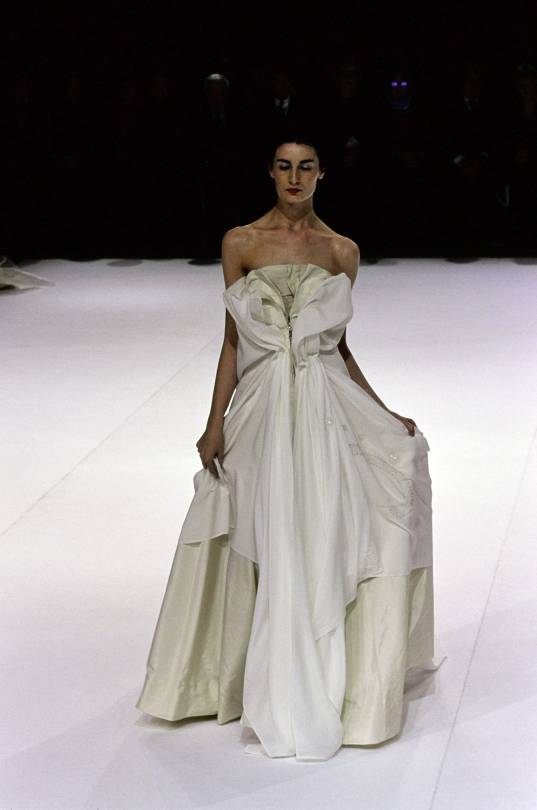
(Model: Erin O’Connor)
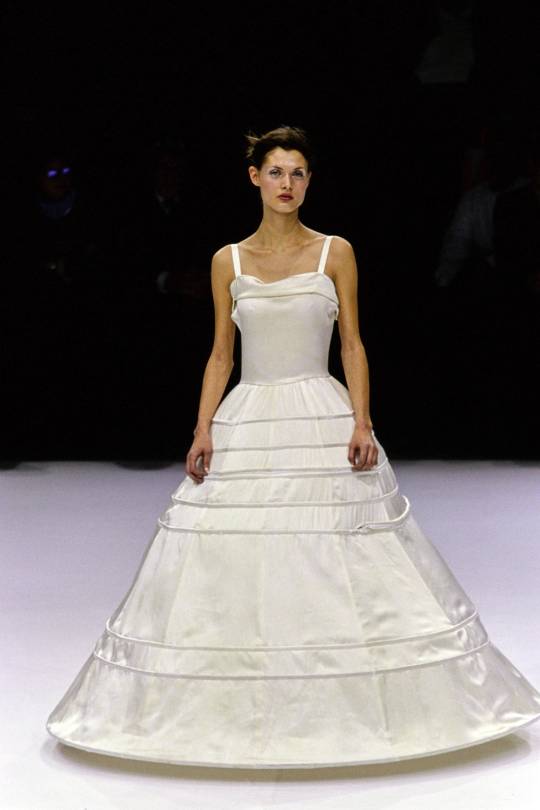
(Model: Malgosia Bela)
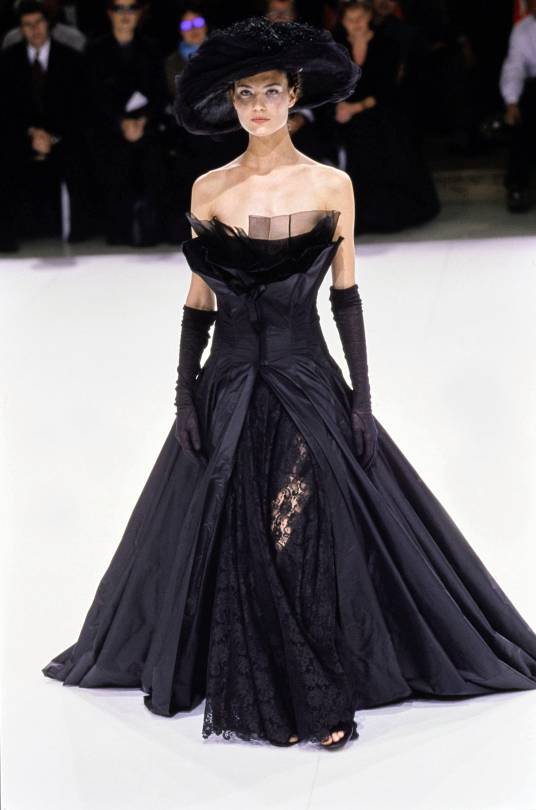
(Model: Shalom Harlow)
#yohji yamamoto#fashion#runway#spring#1999#ready to wear#alexandra egorova#erin o'connor#malgosia bela#shalom harlow
1 note
·
View note
Note
hi! could i get eldritch/eerie/horror themed names? (anything fitting that theme!)
clarice, nightshade, nyx, abisnthe, ophelia, regan, rosemary, samara, morrigan, lilith, raven, blaire, salem, carrie, ebony, noire, ruby, rue, tabitha, tara, bela
ash, crow(e), thorn(e), storm, rune, phoenix, circe, hallow, harlowe, piper, ezra, crimson/crim, hecate, mist(y), dusk, phantom
damien, wolf, emmett, faun, ichabod, silas, xander, rusty, dixon
#sorry for the lack of masc names#also you could 100% just go by eerie#we did for a while#it was awesome#names#name list#name suggestions#name help#mogai safe#lgbtq#queer#trans#mogai#transgender#mogai friendly#mogai community#xenogender#xenogenders#it's me and queue not us and her
74 notes
·
View notes
Text


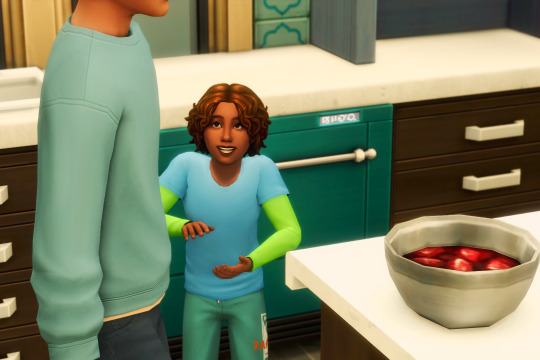

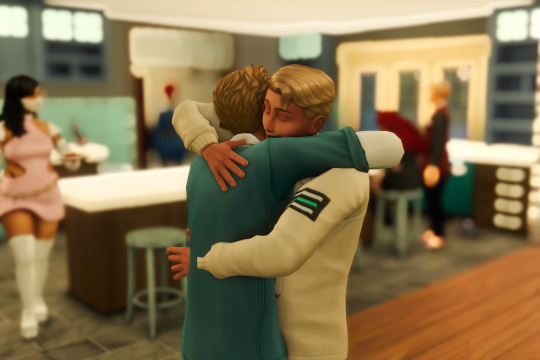

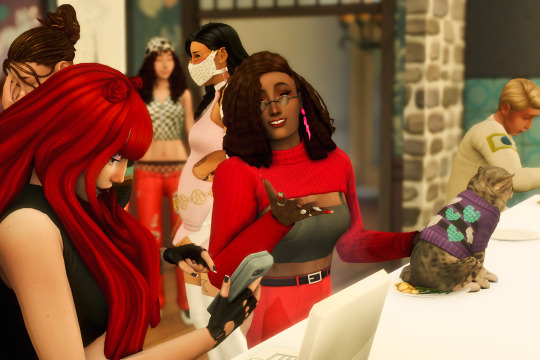
it was SO nice to have a Harlow Harvestfest without a fire in the kitchen or any other disasters FOR ONCE
#family jewels legacy challenge#harlow:sapphire#floris#magnus harlow#ramona harlow#pedro#morgyn#nova by sugarcain sims#hedy bermudez#bela harlow#marilyn harlow#glitch by simminglytimeladies#mr. snuggles
2 notes
·
View notes
Text
OLD HOLLYWOOD STARS & THEIR ZODIAC SIGNS
Aries: Gregory Peck, Spencer Tracy, Bette Davis, Joan Crawford, William Holden, Doris Day, Anthony Perkins, Debbie Reynolds, Ann Miller, Billie Holiday, Karl Malden, Warren Beatty, Marlon Brando, Charlie Chaplin, Mary Pickford, Lon Chaney, Steve McQueen, Ed Begley, Melvyn Douglas, Alec Guinness, Leslie Howard, Jayne Mansfield
Taurus: Jimmy Stewart, Fred Astaire, Bing Crosby, Audrey Hepburn, Katharine Hepburn, Don Rickles, Orson Welles, Tyrone Power, Rudolph Valentino, Gary Cooper, Henry Fonda, Shirley MacLaine, Shirley Temple, Anthony Quinn, James Mason, Ella Fitzgerald, Lionel Barrymore, Phil Silvers, Jack Klugman, Harold Lloyd, Mary Astor, Simone Simon, Margaret Sullavan, Eve Arden
Gemini: Judy Garland, Bob Hope, Dean Martin, Errol Flynn, Laurence Olivier, Marilyn Monroe, John Wayne, Tony Curtis, Rosemary Clooney, Douglas Fairbanks, Burl Ives, Al Jolson, Stan Laurel, Vincent Price, Basil Rathbone, Rosalind Russell, Hattie McDaniel, Priscilla Lane, Josephine Baker, Jeanette MacDonald, Peggy Lee
Cancer: Ginger Rogers, Eva Marie Saint, Natalie Wood, Olivia de Havilland, Barbara Stanwyck, Lena Horne, Jimmy Cagney, Milton Berle, Yul Brynner, Peter Lorre, Red Skelton, Jane Russell, Gina Lollobrigida, Leslie Caron, Farley Granger
Leo: William Powell, Myrna Loy, Mae West, Clara Bow, Norma Shearer, Esther Williams, Walter Brennan, Robert Mitchum, Louis Armstrong, Peter O’Toole, Jack Haley, Bert Lahr, Alfred Hitchcock, Maureen O’Hara, Lucille Ball, Shelley Winters, Dolores del Rio
Virgo: Lauren Bacall, Gene Kelly, Sophia Loren, Claudette Colbert, Greta Garbo, Donald O’Connor, Ingrid Bergman, Peter Lawford, Fredric March, James Coburn, Fred MacMurray, Peter Sellers, Raquel Welch, George Chakiris, Vera Miles
Libra: Jean Arthur, Carole Lombard, Montgomery Clift, Rita Hayworth, Deborah Kerr, Charlton Heston, Mickey Rooney, Lillian Gish, Groucho Marx, Buster Keaton, Bela Lugosi, George C. Scott, Lenny Bruce, Walter Pidgeon, Greer Garson, Joan Fontaine, Brigitte Bardot, June Allyson, Julie London
Scorpio: Richard Burton, Rock Hudson, Vivien Leigh, Burt Lancaster, Gene Tierney, Grace Kelly, Claude Rains, Joel McCrea, Johnny Carson, Burgess Meredith, Hedy Lamarr, Eleanor Powell, Veronica Lake
Sagittarius: Frank Sinatra, Kirk Douglas, Sammy Davis Jr, Edward G. Robinson, Rita Moreno, Lee Remick, Boris Karloff, Lee J. Cobb, Ricardo Montalban, Irene Dunne, Agnes Moorehead, Gloria Grahame, Betty Grable, Julie Harris
Capricorn: Cary Grant, Humphrey Bogart, Ava Gardner, Marlene Dietrich, Loretta Young, Ethel Merman, Eartha Kitt, Janet Leigh, Lew Ayres, Ray Bolger, Sal Mineo, Danny Kaye, Oliver Hardy, Oscar Levant, Ray Milland, Elvis Presley, Jane Wyman, Kay Francis, Barbara Rush
Aquarius: Kathryn Grayson, James Dean, Paul Newman, Clark Gable, Jimmy Durante, Jack Benny, Lana Turner, Kim Novak, Ronald Colman, Ernest Borgnine, Randolph Scott, Vera-Ellen, Donna Reed, Jack Lemmon, John Barrymore, George Burns, Arthur Kennedy, Cesar Romero, Jean Simmons, Zsa Zsa Gabor
Pisces: Jerry Lewis, Elizabeth Taylor, Jean Harlow, Nat King Cole, Sidney Poitier, Cyd Charisse, Lee Marvin, Jackie Gleason, Edward Everett Horton, David Niven
#us earth signs stay winning#i'm a taurus just for reference#LOL#old hollywood#tag#zodiac signs#zodiac tag#astrology#vintage#old hollywood zodiac signs#jimmy stewart#audrey hepburn#katharine hepburn#classic hollywood#movie stars#humphrey bogart#star signs#aries#taurus#gemini#cancer#leo#virgo#libra#scorpio#sagittarius#capricorn#aquarius#pisces#cary grant
274 notes
·
View notes
Text
Radix Dance Convention, Chicago, IL: RESULTS
High Scores by Age:
Rookie Solo
1st: Calla Massey-’Helium’
2nd: Gloria Somers-’Friend Like Me’
Mini Solo
1st: Carrigan Paylor-’Sophisticated’
2nd: Aurielle Balija-’I’ll Be Seeing You’
2nd: Quinn Riss-’Recollected’
2nd: Natalie Cerepak-’Smoldering’
3rd: Brittany Johnson-’Daddy’
3rd: Lucy Mae Dunn-’Time For Mercy’
4th: Annabel Schoolmeesters-’Broken’
5th: Aoife Nugent-’Blackbird’
6th: Alyssa Kurtz-’Lost’
6th: Emerie Adalman-’The Crumbling’
7th: Alexandra Cielocha-’Open Hands’
8th: Nora Rachel-’Face’
8th: Sophia Rachel-’I Wanna Dance With Somebody’
8th: Gracie Adamson-’Rich Girl’
9th: Audrey Gross-’Girls Just Wanna Have Fun’
9th: Sophia Yurk-’Lamentation’
9th: Bela Bedford-’The Garden’
10th: Taylor Page-’The Rose’
Junior Solo
1st: Aaliyah Dixon-’Vintage Laser’
2nd: Campbell Clark-’The Scarlett Effect’
3rd: Natalia Garcia-’Hallelujah’
3rd: Angelina Elliott-’The Mind’
4th: Preslie Lopez-’Listen’
5th: Kenley Fogltanz-’One Mistress’
5th: Audrey Mayernick-’Oya’
5th: Jazlyn Quintero-’The Deep End’
6th: Brooklyn Alstead-’He’s A Dream’
6th: Veda Schiplin-’Le Voyage’
7th: Emma Arentz-’For Blue Skies’
7th: Caroline Vandenboom-’Simple Life’
7th: Dawn Peyton-’Valhalla’
8th: Emersen Belsaas-’Erosion’
8th: Ellie Buckland-’Le Jazz Hot’
8th: Celia Robinson-’Organs’
9th: Amelia Duncan-’Better Off Alone’
9th: Adriana Reel-’Degeneration’
10th: Alaina Arnold-’Heal’
10th: Lily Neumann-’Starry Eyed’
Teen Solo
1st: Payton Riss-’Twisting & Untangling’
2nd: Harlow Ganz-’Breaking the Surface’
3rd: Andres Jiminez-’Frontieres’
4th: Callie Weinert-’Comfortable’
4th: Jonna Martin-’With Somebody’
5th: Peyton Anderson-’Anata’
5th: Alexis Schueller-’Darkest Hour’
5th: Olivia Drumm-’Drowning’
6th: Livia Wambach-’Courage’
6th: Julissa Ortiz-’Never Knock’
7th: Scarlett Szewczyk-’Be A Lady’
7th: Finley Williams-’Curious Yellow’
7th: Lynlie Ferrin-’Opulent’
8th: Morgan Graham-’Heal’
9th: Kylie Buedel-’Freyr’
10th: Anna Coufal-’Into Wind’
Senior Solo
1st: Sophie Grabau-’Unravel’
2nd: Randi Moraga-’Do You’
2nd: Sara Eberhardt-’Sticks and Stones’
2nd: Jordin Suwalski-’Hold On Tight’
2nd: Maddie Nementh-’Sycamore Tree’
3rd: Sophie Tosh-’The’
3rd: Samantha Schmaling-’Then I Heard A Bachelor’s Cry’
4th: Makayla D’Ambrosio-’46 things’
5th: Mary Crum-’Destinations’
5th: Allyson Hiser-’Without You’
6th: Elle Tosh-’Safe’
7th: Paige Gilbert-’Closer’
7th: Sophia Bast-’Love & Rage’
8th: Emily Reiche-’Lonely’
8th: Adrianna Panagakis-’Night So Long’
9th: Mackenzie Haensgen-’Creeper’
10th: Findley Frazier-’715′
10th: Maggie Gross-’Locked Out of Heaven’
10th: Gabrielle Schultz-’No Words’
Rookie Duo/Trio
1st: Steps Dance Center-’Walk the Dinosaur’
2nd: Creative Playground-’Jungle Rhythm’
Mini Duo/Trio
1st: The Dance Complex-’Crumbling’
2nd: Artistic Edge Dance Centre-’We Too Shall Rest’
3rd: Steps Dance Center-’Take It’
Junior Duo/Trio
1st: Dance Xplosion-’Roar’
2nd: Artistic Edge Dance Centre-’Spring’
3rd: Accent on Dance Mukwonago-’When You’re Smiling’
Teen Duo/Trio
1st: The Difference Dance Company-’Come Let Us’
2nd: Artistic Edge Dance Centre-’Cello Sonata’
3rd: The Colony-’Slippin’
3rd: Sunshine Dance-’You Make Me Feel So Young’
Senior Duo/Trio
1st: The Difference Dance Company-’3′
2nd: Dance Xplosion-’Shout’
2nd: Artistic Edge Dance Centre-’Symphony of Sorrow’
2nd: The Difference Dance Company-’The Eye’
3rd: Bella Via Dance Studio-’Amen’
Rookie Group
1st: Dance Xplosion-’Hand Jive’
Mini Group
1st: Dance Xplosion-’Low’
2nd: Water Street Dance Milwaukee-’Cornfield Chase’
2nd: Water Street Dance Milwaukee-’For My Help’
3rd: Artistic Edge Dance Centre-’Let My Touch’
Junior Group
1st: Dance Xplosion-’Easy’
2nd: Dance Xplosion-’Fergie’
3rd: Artistic Edge Dance Centre-’Cello Suite’
Teen Group
1st: Steps Dance Center-’Ripple Effect’
2nd: Dance Xplosion-’Precious’
3rd: The Colony-’They Don’t Love You’
Senior Group
1st: Artistic Edge Dance Centre-’Fade’
2nd: Dance Xplosion-’Die Alone’
3rd: Artistic Edge Dance Centre-’WAIT’
Mini Line
1st: Artistic Edge Dance Centre-’Whispers In The Dark’
2nd: Steps Dance Center-’Stop’
3rd: Steps Dance Center-’Something to Believe In’
Junior Line
1st: Dance Xplosion-’In The Silence’
2nd: Dance Xplosion-’Cold Hearted Snake’
3rd: Steps Dance Center-’Concerto’
Teen Line
1st: Dance Xplosion-’End of Time’
2nd: Dance Xplosion-’Miss You’
3rd: Dance Xplosion-’Particles’
Senior Line
1st: Dance Xplosion-’Misdemeanor’
Mini Extended Line
1st: Dance Xplosion-’Shake It Off’
Junior Extended Line
1st: Dance Xplosion-’End of Time’
2nd: Sunshine Dance-’Puttin’ On The Ritz’
2nd: Beyond Words Dance Company-’You Can’t Stop The Beat’
3rd: Sunshine Dance-’For You’
Teen Extended Line
1st: Artistic Edge Dance Centre-’Recomposed Summer’
2nd: Dance Xplosion-’JLo’
2nd: Beyond Words Dance Company-’Wait For It’
3rd: Beyond Words Dance Company-’Light of Love’
3rd: Beyond Words Dance Company-’Take Me There’
High Scores by Performance Division:
Rookie Jazz
Dance Xplosion-’Hand Jive’
Mini Jazz
Dance Xplosion-’Shake It Off’
Mini Musical Theatre
Steps Dance Center-’Revolting Children’
Beyond Words Dance Company-’Hard Knock Life’
Mini Ballet
Steps Dance Center-’Pizzicato Polka’
Mini Contemporary
Artistic Edge Dance Centre-’Whispers In The Dark’
Water Street Dance Milwaukee-’For My Help’
Mini Lyrical
Steps Dance Center-’Something to Believe In’
Mini Specialty
Water Street Dance Milwaukee-’Cornfield Chase’
Junior Musical Theatre
Sunshine Dance-’Run, Freedom, Run’
Sunshine Dance-’Right Side of The Bed’
Beyond Words Dance Company-’You Can’t Stop The Beat’
Junior Lyrical
Dance Xplosion-’In The Silence’
Junior Contemporary
Dance Xplosion-’Easy’
Junior Jazz
Dance Xplosion-’Cold Hearted Snake’
Junior Ballet
Steps Dance Center-’One Note’
Junior Hip-Hop
Sunshine Dance-’Oompa Loompa Takeover’
Junior Tap
Sunshine Dance-’Puttin’ On The Ritz’
Teen Hip-Hop
Artistic Edge Dance Centre-’Yonce’
Teen Jazz
Dance Xplosion-’End of Time’
Teen Tap
Artistic Edge Dance Centre-’Clocks’
Teen Contemporary
Steps Dance Center-’Ripple Effect’
Teen Lyrical
Steps Dance Center-’Nicest Thing’
Teen Musical Theatre
Beyond Words Dance Company-’Always Something There To Remind Me’
Teen Specialty
Artistic Edge Dance Centre-’Highest Flood’
Senior Specialty
Artistic Edge Dance Centre-’Moonlight Presto’
Senior Lyrical
Artistic Edge Dance Centre-’How Do I Live’
Senior Jazz
Artistic Edge Dance Centre-’Fade’
Senior Hip-Hop
Dance Xplosion-’Misdemeanor’
Senior Contemporary
Dance Xplosion-’Die Alone’
Best of Radix:
Rookie
Dance Xplosion-’Hand Jive’
Mini
Beyond Words Dance Company-’Hard Knock Life’
Steps Dance Center-’Pizzicato Polka’
Artistic Edge Dance Centre-’Whispers In The Dark’
Water Street Dance Milwaukee-’Cornfield Chase’
Dance Xplosion-’Shake It Off’
Junior
Sunshine Dance-’Puttin’ On The Ritz’
Dance Xplosion-’End of Time’
The Colony-’Lose Control’
Steps Dance Center-’One Note’
Artistic Edge Dance Centre-’Cello Suite’
Dance Xplosion-’In The Silence’
Teen
Dance Xplosion-’End of Time’
Steps Dance Center-’Ripple Effect’
The Colony-’They Don’t Love You’
Beyond Words Dance Company-’Wait For It’
Artistic Edge Dance Centre-’Recomposed Summer’
Senior
Sunshine Dance-’Like Eye Did’
Artistic Edge Dance Centre-’Fade’
Dance Xplosion-’Die Alone’
Studio Standout:
Sunshine Dance-’Like Eye Did’
Steps Dance Center-’Ripple Effect’
Dance Xplosion-’Die Alone’
Beyond Words Dance Company-’Wait For It’
Artistic Edge Dance Centre-’Fade’
10 notes
·
View notes
Text
The Public Enemy Solidified Gang Rule Under James Cagney for 90 Years
https://ift.tt/3vfQifQ
William Wellman’s The Public Enemy (1931) turns 90 this weekend. When the film first came out, a theater in Times Square showed it nonstop, 24 hours a day, seven days a week. The movie marks the true beginning of gangster movies as a genre. Mervyn LeRoy’s Little Caesar may have hit theaters first, but The Public Enemy set the pattern, and James Cagney nailed the patter. Not just the street talk either; he also understood its machine gun delivery. His Tommy Powers is just a hoodlum, never a boss. He is a button man at best, even if he insisted his suits have six buttons.
The Public Enemy character wasn’t even as high up the ladder as Paul Sorvino’s caporegime Paul Cicero in Martin Scorsese’s Goodfellas. But Cagney secured the turf Edward G. Robinson’s Rico Bandello took a bullet to claim in Little Caesar, and for the rest of his career Cagney never let it go.
Some would argue genre films began in 1931. Besides mob movies, the year introduced the newspaper picture with Lewis Milestone’s The Front Page and John Cromwell’s Scandal Sheet; Universal Pictures began an unholy run of horror classics via Tod Browning’s Dracula and James Whale’s Frankenstein, with the two turning Bela Lugosi and Boris Karloff into household names; and Howard Hawks’ Scarface would land the knockout for the gangster genre, even if it didn’t get released until 1932.
Sadly, the classic “Gangster Film” run only lasted one production season, from 1930 to 1931, and less than 30 films were made during it. Archie Mayo’s The Doorway to Hell started the ball rolling in 1930, when it became a surprise box office hit. It stars Lew Ayres as the top mug, with Cagney as his sidekick. For fans of pre-Code Hollywood, it is highly recommended. It includes a kidnapping scene which results in the death of a kid on the street. Without a speck of blood or any onscreen evidence, it is cinematically shocking in its impact.
Both Little Caesar and The Public Enemy earned their street cred, defying the then-toothless 1930 Motion Picture Production Code, which preceded the Hays Code. After New York censors cut six scenes from The Public Enemy to clear it for release, the Motion Picture Producers and Distributors of America (MPPDA) set further guidelines for the proper cinematic depiction of crime.
Public Enemy director Wellman was an expert in multiple genres. He spit out biting satires like Nothing Sacred (1937) and Roxie Hart (1942), and captured gritty, dark realities in The Ox-Bow Incident (1943) and Story of G.I. Joe (1945). He won his only Oscar for A Star Is Born (1937). The Public Enemy is the first example of what would be his trademark: stylish cinematography and clever camera-work. The dark suspense he captures is completely different from the look of German expressionism. It captured the overcast shadows of urban reality and would influence the look of later noir films. His main character would inspire generations of actors.
“That’s just like you, Tom Powers. You’re the meanest boy in town.”
Orson Welles lauded James Cagney as “maybe the greatest actor who ever appeared in front of a camera.” Will Rogers said watching Cagney perform was “like a bunch of firecrackers going off all at once.” The New York City born performer explodes in this movie. Even in black and white, Cagney’s red hair flares through the air like sulfur on a match. It turns out to be a slow burn, which will reach its ultimate climax in 1949’s White Heat. The Public Enemy is loaded with top talent, but you can’t take your eyes off Cagney. Not even for a second. You might miss some tiny detail, like the flash of a grin, a wink, or a barely perceptible glare.
Cagney had a simple rule to acting: All you had to do was to look the other person straight in the eyes and say your lines. “But mean them.” In The Public Enemy, the characters communicate without lines. When Tom and Matt Doyle (Edward Woods) sneak a peek into Larry the Limp’s casket, we understand this is the first time the two young thugs lost someone their own age. The scene barely implies how fortunate they are not to be in that box, but their curiosity is as palpable as the loss of their last shred of innocence.
Cagney was originally cast as Matt, and scenes were shot with him in the role. The parts were switched mid-production, but they didn’t reshoot the flashback scenes, making it look like the pair swapped bodies between 1909 and 1915. It’s a shame because Frankie Darro, who plays the young Matt, made a career out of playing baby face Cagney, and later joined the East Side Kids franchise.
Former “Our Gang” actor Frank Coghlan Jr. took on the role of young Tom. He takes the lashes from his cop father’s belt, backtalking him the whole time. Tom Powers is reprehensible. He never says thank you and doesn’t shake hands. He delights in the violence and sadism. Powers doesn’t go into crime because of poverty; he just can’t be contained. Cagney’s mobster mangles, manhandles, maims and murders, and still needs more room in his inseam.
Dames, Molls, and Grapefruits
Besides defying the ban on romanticizing criminals, both The Public Enemy and Little Caesar broke sexual codes. There are explicit signs that Rico Bandello represses his sexuality in Caesar. Scenes between him and his friend Joe, and his gunman Otera, thinly veil homoerotic overtones. Public Enemy’s Powers, by contrast, subtly encourages the gay tailor who is openly hitting on him.
There are strong indications Putty Nose (Murray Kinnell) is grooming Tommy and Matt for more than just fenced goods. Look at the way Putty sticks his ass in Powers’ face while he is shooting pool. Putty Nose’s execution at the piano is creepily informed by the unspoken sins between the men. Tommy relishes the kill.
However, Tommy doesn’t relish being manhandled when he’s too drunk to notice. While the gang goes to the mattresses in the movie’s gang war, Tommy is raped by Jane (Mia Marvin), his boss Paddy’s girl. Powers protests the best he can, but the camera angles leave no doubt. Tommy wakes up hungover, horrified, and feeling impotent. Matt, however, has no trouble getting “busy” with his girlfriend Mamie, played by Joan Blondell, in one of the scenes trimmed by the censors. Blondell, Jean Harlow, and Mae Clarke, who plays Tommy’s girlfriend Kitty, represent a glitzy cross-section of white Roaring Twenties glamour. In the opening credits, when Harlow and Blondell smile at the camera, male audience members of the time blushed.
Harlow was Hollywood’s original “Blonde Bombshell,” starring in the movie that coined the term. Her earthy comic performances would make her a major star at MGM, but she was a dud to critics of The Public Enemy. Hers was the only part which was criticized, and the reviewers were brutal, declaring her voice untrained and her presence boring.
Harlow’s greatest asset had to be contained within the Pre-Code era. Straddled with a wordy part as a slumming society dame, she is directed to slow her lines to counter the quick patter of the rest of the cast. Yet Harlow uses that to her benefit in the film’s best moment of sexual innuendo. While telling Tommy about “the men I’ve known,” she pauses, and appears to be calculating them in her head before she says, “And I’ve known dozens of them.” When an evening alone with Tommy is cut short, Gwen’s exasperation over the coitus interruptus is palpable. Members of the Catholic Legion of Decency probably had to go to confession after viewing the film for slicing.
Most people know The Public Enemy for the famous grapefruit scene where Powers pushes a grapefruit into his girlfriend’s face. “I wish you was a wishing well,” he warns, “so that I could tie a bucket to you and sink ya.” Tommy treats women like property. They are status symbols, the same as clothes or cars. Kitty’s passive-aggressive hints at commitment get on Tom’s nerves. He can only express himself through violence. There are rumors Cagney, who would go on to rough up Virginia Mayo in White Heat and brutalize Doris Day in Love Me or Leave Me, didn’t warn Clarke he was going to use her face as a juicer. According to the autobiography Cagney by Cagney, Clarke’s ex-husband Lew Brice loved the scene so much he watched it a few times a day, timing his entrance into the theater to catch it and leave.
Both actors have said it was staged as a practical joke to see how the film crew would react. It wasn’t meant to make the final cut. Wellman told TCM he added it because he always wanted to do that to his wife. The writer reportedly wrote the scene as a kind of wish-fulfilling fantasy.
The screenplay was written by Harvey F. Thew. It was based on Beer and Blood by John Bright and Kubec Glasmon. The unpublished novel fleshed out press accounts of the bootlegging Northside gang leaders, Charles Dion “Deanie” O’Banion, Earl “Hymie” Weiss, and Louis “Two-Gun” Alterie. Cagney based his Tommy Powers character on O’Banion and Altiere. Edward Woods was doing his take on Weiss. The book reflected the headlines in the Chicago papers, which reported Weiss smashed an omelet into his girlfriend’s face.
Read more
Movies
Al Capone: 9 Actors Who Played the Original Scarface
By Tony Sokol
Movies
Key Largo, Lauren Bacall & The Definitive Post-War Film
By David Crow
The Trouble Squad
The Public Enemy borrowed from the day’s headlines in other ways too. Hymie Weiss was assassinated in October 1926. It was the first reported “machine-gun nest” murder. It is recreated in the killing of Matt Doyle. While shooting the sequence, Cagney ducked real machine gun fire to bring authenticity to the scene. Also taken from real life is the fact that after O’Banion was killed in ‘24, Alterie’s first reaction was to do public battle with the killers. This is similar to Tommy’s final shootout at Schemer Burns’ nightclub headquarters.
Leslie Fenton’s dashing mob captain Nails Nathan (“born Samuel”) flashes the greatest grin in mob movie history. He is based on Samuel “Nails” Morton, a member of O’Banion’s mob. Both “Nails” were driven to their coffins the way it is depicted in The Public Enemy. The real Morton died in a riding accident in 1923, and “Two-Gun” Alterie and some of the other gang members went back to the stables, rented the horse which kicked Nails in the head, and shot the animal. Mario Puzo may have been inspired by this scene when he wrote The Godfather. It is not only tie to the Francis Ford Coppola movie. Oranges have as much vitamin C as grapefruits. Another similarity between the two films is the threat of being kidnapped from the hospital by a rival gang.
The Powers brothers’ relationship vaguely echoes the one between war hero Michael and Sonny Corleone, who believes, as his father does, soldiers were “saps” to risk their lives for strangers. Donald Cook, who played Mike Powers, didn’t pull any punches on the set. In the scene where he knocks Tom into the table before going off to war, he really connects. Wellman told Cook to do it without warning so he could get that look of surprise. Cook broke one of Cagney’s teeth, but Cagney stayed in character and finished the scene.
“It is a wicked business.”
After the stock market crash, get-rich-quick schemes seemed the only way through the Great Depression. The gangster was an acceptable headline hero during Prohibition because the law was unpopular with the press. But after 1929, the gangster became the scapegoat villain. The Public Enemy was the ninth highest grossing film of 1931. But the genre lost its appeal after April of that year, as studios pumped out pale imitations and audiences got tired of the saturation, according to the book Violence and American Cinema, edited by J. David Slocum. Religious and civic groups accused Hollywood of romanticizing crime and glamorizing gangsters.
The Public Enemy opens with a dire warning: Don’t be a gangster. Hoodlums and terrorists of the underworld should not be glamorized. The only MPAA rule the film didn’t break was portraying an alliance between organized crime and politics. The studios passed the films off as cautionary tales which were meant to deflate the gangster’s appeal by ridiculing their false heroism.
Through this hand-wringing, however, Cagney turns false heroics on its head with the comic brilliance of a Mack Sennett short. Stuck without a gun, he robs a gun store armed with nothing but moxie. Powers never rises in the organization. He takes orders and whatever the boss says is a good cut, only asking for more money once from Putty Nose. Unlike Rico, who rose to be boss among bosses, Powers has no power to lose. This is just the first gig he landed since he was a regular “ding ding” driving a streetcar, and it connected with audiences like a sock on the button. They identified with the scrappy killer, and it surprised them.
Even Gwen notices Tommy is “very different, and it isn’t only a difference in manner and outward appearances. It’s a difference in basic character.” Strict Freudians might lay this on his mother (Beryl Mercer), the greatest enabler Cagney will see until White Heat. Ma Powers’ little boy is a budding psychopath knocking off half the North Side, but look at the head on his beer. For audiences at the time, Tom was the smiling, fresh-scrubbed face of evil. He is consistently unsympathetic but likable from the moment he hits the opening credits.
Like Malcom McDowell’s Alex in A Clockwork Orange, he is the fiend’s best friend. Even if it is Tommy’s fault his best pal Matt gets killed. While Cagney spent his career ducking his “you dirty, double-crossing, rat” line from Taxi, the actor wasn’t afraid to play one in Powers. He’s not a rat in the sense he’d snitch on anyone. He’s the last of the pack who sticks it out for his pals when his back is up against the wall.
A Hail of Bullets
Tommy Powers goes by this credo: live fast, die young, and leave a corpse so riddled with bullets, not even his mother can look at his body when he’s done. But then, no one can end a film like Cagney. He’s danced down the White House stairs in Yankee Doodle Dandy (1942), been rolled across the concrete steps of a city church in The Roaring Twenties (1939), and was blown to kingdom come in White Heat. He gets two death scenes in The Public Enemy, a rain-soaked climax, and a denouement as scary as The Mummy. Tommy only brings one gun to the gang fight, and by the time he hits the pavement, he’s got more holes in him than the city sewage system.
“I ain’t so tough,” Tommy says on his final roll into the gutter. Cagney’s first professional job was in a musical drag act on the Vaudeville circuit, and he called himself a “song and dance man” long after retirement. For The Public Enemy, conductor David Mendoza led the Vitaphone Orchestra through such period hits as “Toot Toot Tootsie (Goodbye),” “Smiles,” and “I Surrender Dear.” But the song “I’m Forever Blowing Bubbles” is the one which lingers in the memory. Martin Scorsese has cited it as a reason his films are so filled with recognizable music.
Street violence comes with a natural soundtrack. Transistor radios accompany takedowns. Boom boxes blast during shakedowns. Car stereos boost the bass during drive-by shootings. In The Gang That Couldn’t Shoot Straight, mobsters feed quarters into a jukebox to cover up sounds of a beating.
In The Godfather, Part II, a street band plays traditional Italian songs while Vito Corleone puts bullets in the neighborhood Black Hand, Don Fanucci. The last thing we hear in the abrupt close to the mob series The Sopranos is a Journey song. The first thing Tommy’s mother does when she hears her boy is coming home from the hospital is drop a needle on a record.
The ending leaves us with two questions: Who killed Tommy, and what’s his brother going to do about it? We figure whoever did the job on Powers was probably a low-level button man from Schemer’s rival outfit. Probably even lower down the ladder than Tommy, and on his way up, until another Tommy comes along. Crime only pays in the movies, Edward G. Robinson often joked.
Mike’s reaction to the bandaged corpse is ambiguous. He’s already shown outward signs of the trauma following the horrors of war. Is he clenching his fists in anguish or anger? Is he broken by the battlefield or marching off in vengeance, a soldier on one last duty? Cook’s exit can go either way.
After 90 years, The Public Enemy is still fresh. It’s aged better than Little Caesar or Scarface. Cagney wouldn’t play a gangster again until 1938, but the image is etched so deeply in the persona, audiences forget the vagaries of villainy Hollywood could spin, and the range of characters Cagney could play. He and the film continue to influence filmmakers, inform culture, and surprise audiences. Tommy Powers was just a mug, but those streets are still his.
cnx.cmd.push(function() { cnx({ playerId: "106e33c0-3911-473c-b599-b1426db57530", }).render("0270c398a82f44f49c23c16122516796"); });
The post The Public Enemy Solidified Gang Rule Under James Cagney for 90 Years appeared first on Den of Geek.
from Den of Geek https://ift.tt/3xnjfs7
1 note
·
View note
Text

Leila Hyams (May 1, 1905 – December 4, 1977) was an American film actress, model, and vaudevillian, who came from a show business family. Her relatively short film career began in the 1920s during the era of silent films and ended in 1936. Although her career only lasted around twelve years, the blonde blue-eyed ingenue and leading lady appeared in more than 50 film roles and remained a press favorite, with numerous magazine covers.
She was born in New York City to vaudeville comedy performers John Hyams, (1869-1940) and Leila Hyams (1882-1953). Both parents appeared in films and mother Leila Senior was also a noted stage performer; her parents can later be seen together in several Hollywood films such as in 1939's The Housekeeper's Daughter. Hyams appeared on stage with her parents while still a child, working in their vaudeville act for five years.
As a teenager, she worked as a model and became well known across the United States after appearing in a successful series of newspaper advertisements. This success led her to Hollywood.
She made her first film in 1924, and with her blonde hair, green eyes, delicate features, and good-natured demeanor, was cast in a string of supporting roles, where she was required to do very little but smile and look pretty. She proved herself capable of handling the small roles she was assigned, and over a period of time, she came to be taken seriously as an actress. By 1928, she was playing starring roles, achieving success in MGM's first talkie release, Alias Jimmy Valentine (1928) opposite William Haines, Lionel Barrymore, and Karl Dane. The following year, she appeared in the popular murder mystery The Thirteenth Chair, a role that offered her the chance to display her dramatic abilities as a murder suspect. At Fox that same year, she appeared in director Allan Dwan's now lost romantic adventure The Far Call opposite Charles Morton. The quality of her parts continued to improve as the decade turned, including a role as Robert Montgomery's sister in the prison drama The Big House (1930) with Chester Morris and Wallace Beery, for which Hyams once again received positive reviews. She then appeared in Surrender (1931) in which Warner Baxter and Ralph Bellamy desperately competed for her attention.
Although she succeeded in films that required her to play pretty ingenues, and developed into a capable dramatic actress in 1930s crime melodramas, she is perhaps best remembered for two early 1930s horror movies, as the wise-cracking but kind-hearted circus performer in Freaks (1932) and as the heroine in the Bela Lugosi film Island of Lost Souls (1932). Hyams was the original choice to play Jane in Tarzan the Ape Man (1932), but turned it down. The role was played by Maureen O'Sullivan. She also appeared in the once controversial Jean Harlow film Red-Headed Woman (1932), the musical comedy The Big Broadcast (1932) with Bing Crosby, George Burns, and Gracie Allen, and was praised for her comedic performance in Ruggles of Red Gap (1935). In 1935 she made 1,000 Dollars a Minute for Republic and retired soon after.
Hyams married her agent Phil Berg in 1927. In 1936, after a 12-year acting career and performing in 50 films, she retired from the motion-picture industry; nevertheless, she remained active in the Hollywood community for the rest of her life. In 1977, after a "brief illness", Hyams died at age 72 at her home in Bel-Air in Los Angeles. She was survived by her husband Phil.
4 notes
·
View notes
Text
VOGUE - 12″ VERSION
(Jamie Lynn)
(O que você está olhando ?)
Não estou bonita?
Não estou bonita?
(Vogue, vogue, vogue)
(Vogue, vogue, vogue)
Olhe diretamente para mim
Todos a sua volta te julgam
Mesmo você não merecendo isso
Olhe para eles
Estou tentando me manter firme
Tudo o que eu faço vocês detonam
Eu só quero ser eu mesma
Vocês não aguentariam isso
Quando tudo está tão ruim
Eu apenas fujo para longe
Me jogo nas pistas de danças do subúrbio
Porque lá eu posso ser como eu sou
Ninguém criticando ninguém
Vamos lá, vogue (vogue)
Deixe seu sentir a música
Vamos lá, vogue (vogue)
Vamos lá, vogue (vogue)
Libere sua mente e dance
Vamos lá, vogue (vogue)
Você precisa apenas ser você mesma
Portanto seja você mesma
É isso que te faz bem
(Naomi)
Levante sua cabeça e olhe as estrelas (seja uma)
Apenas dance até o sol nascer e o mundo acabar
Não olhe para os lados e faça sua melhor pose
(pose pose pose)
Sinta a energia, baby estou na capa de revista
Sonhando um dia estar na Vogue
(vogue vogue vogue)
Seja a melhor para você, você está no topo do mundo
Nós ganhamos tudo com nossa beleza (Fashion!)
Siga sua própria luz e use sua magia
Desfile com seu melhor vestido e mostre para que você veio
Você sabe que consegue ser uma inspiração
Um dia eles irão ver
Muitas portas irão abrir para você
Vamos lá, vogue (vogue)
Libere sua mente e dance
Vamos lá, vogue (vogue)
Vamos lá, vogue (vogue)
Deixe seu corpo sentir a música
Vamos lá, vogue (vogue)
(Jamie Lynn)
Todas somos bonitas de natureza
Não apenas você ou ele porque são ricos
A alma é apenas uma só
Todos somos iguais, independente de qualquer coisa
Se a vida é um baile, vamos dançar até acabar
Vamos lá, vogue (vogue)
Deixe seu corpo sentir a música
Vamos lá, vogue (vogue)
Vamos lá, vogue (vogue)
Libere sua mente e dance
Vamos lá, vogue (vogue)
(Courtney)
Dance, dance, dance, ay
É como se não houvesse um amanhã vindo
Estamos juntos no mesmo lance
A lua não é o bastante para iluminar essa noite, vogue
Sim, estamos realmente belas essa noite, vogue
Realmente não temos que nos preocupar
A pista de dança já está cheia
Somos atração principal, todos olham para nós
Estamos radiante, diga isso (vogue)
Agora precisamos continuar juntos
Olhe para as fotos que estão tirando
Pose (ha!)
Vamos lá, vogue
Eu sou linda e sempre serei
Eu estou no comando agora
Venha dançar no ritmo da música
Vamos lá, vogue
Eu sou linda e sempre serei
Eu estou no comando agora
Venha dançar no ritmo da música
(Teyana T)
Sra. Tea
Eu tenho o mundo em minhas mãos, este é o plano de mestre
Tão claro quanto sou melhor do que qualquer homem
Esses caras soletram meu nome errado como T-E-A
Me destaquei porque a nobreza está no meu DNA
Ok, foi o que disseram quando apareci na capa da VOGUE EUA
Vamos ser claros e vamos ser justos
Nossos nomes são reconhecidos em qualquer lugar
Esta é uma mesa redonda cheia de chefes
Eu não sou um “homem” de negócios, eu sou
O negócio, cara! melhor ser cauteloso
Manos pensam que me conhecem
Mas só sabem metade da história
Eles pensam que sabem o que é preciso para foder comigo
Como eles podem fazer isso? Vamos começar com o básico
Sou Dior em abundância, alta costura, posando em um oásis
Você está lidando com 4 autoridades
Jamie, Court, Naomi e T
Estamos em toda parte como a moda (vogue)
Paparazzi, luzes piscando, sensação de embriaguez e pose (pose)
(Jamie Lynn)
Marilyn e Campbell
Brigitte e Harlow
Coco, Carmen
Rainhas da beleza
Grace Kelly
Diane, Versace
Audrey, Loren
Bündchen
Dançam como se não houvesse o amanhã
Rainhas da beleza, mulheres divinas
Lutaram para chegar ao topo
Muitas se foram por ser quem eram
Todas somos bonitas de natureza
Não será uma capa de revista que dirá o contrário
Todas nós podemos conseguir
Apenas temos que ser quem somos
Sem deixar ninguém mudar isso
(Jamie Lynn, Naomi, Courtney & Teyana T)
Deixe eu ser eu mesma, vogue
Eu sou linda, vogue
Por que não estou em sua capa ? vogue
Vamos lá, vogue
Libere sua mente
Eu estou no comando agora
Venha dançar no ritmo da minha música
1 note
·
View note
Text

Leila Hyams (May 1, 1905 – December 4, 1977) was an American film actress, model, and vaudevillian, who came from a show business family. Her relatively short film career began in the 1920s during the era of silent films and ended in 1936. Although her career only lasted around twelve years, the blonde blue-eyed ingenue and leading lady appeared in more than 50 film roles and remained a press favorite, with numerous magazine covers.
She was born in New York City to vaudeville comedy performers John Hyams, (1869-1940) and Leila Hyams (1882-1953). Both parents appeared in films and mother Leila Senior was also a noted stage performer; her parents can later be seen together in several Hollywood films such as in 1939's The Housekeeper's Daughter. Hyams appeared on stage with her parents while still a child, working in their vaudeville act for five years.
As a teenager, she worked as a model and became well known across the United States after appearing in a successful series of newspaper advertisements. This success led her to Hollywood.
She made her first film in 1924, and with her blonde hair, green eyes, delicate features, and good-natured demeanor, was cast in a string of supporting roles, where she was required to do very little but smile and look pretty. She proved herself capable of handling the small roles she was assigned, and over a period of time, she came to be taken seriously as an actress. By 1928, she was playing starring roles, achieving success in MGM's first talkie release, Alias Jimmy Valentine (1928) opposite William Haines, Lionel Barrymore, and Karl Dane. The following year, she appeared in the popular murder mystery The Thirteenth Chair, a role that offered her the chance to display her dramatic abilities as a murder suspect. At Fox that same year, she appeared in director Allan Dwan's now lost romantic adventure The Far Call opposite Charles Morton. The quality of her parts continued to improve as the decade turned, including a role as Robert Montgomery's sister in the prison drama The Big House (1930) with Chester Morris and Wallace Beery, for which Hyams once again received positive reviews. She then appeared in Surrender (1931) in which Warner Baxter and Ralph Bellamy desperately competed for her attention.
Although she succeeded in films that required her to play pretty ingenues, and developed into a capable dramatic actress in 1930s crime melodramas, she is perhaps best remembered for two early 1930s horror movies, as the wise-cracking but kind-hearted circus performer in Freaks (1932) and as the heroine in the Bela Lugosi film Island of Lost Souls (1932). Hyams was the original choice to play Jane in Tarzan the Ape Man (1932), but turned it down. The role was played by Maureen O'Sullivan. She also appeared in the once controversial Jean Harlow film Red-Headed Woman (1932), the musical comedy The Big Broadcast (1932) with Bing Crosby, George Burns, and Gracie Allen, and was praised for her comedic performance in Ruggles of Red Gap (1935). In 1935 she made 1,000 Dollars a Minute for Republic and retired soon after.
Hyams married her agent Phil Berg in 1927. In 1936, after a 12-year acting career and performing in 50 films, she retired from the motion-picture industry; nevertheless, she remained active in the Hollywood community for the rest of her life. In 1977, after a "brief illness", Hyams died at age 72 at her home in Bel-Air in Los Angeles. She was survived by her husband Phil.
3 notes
·
View notes